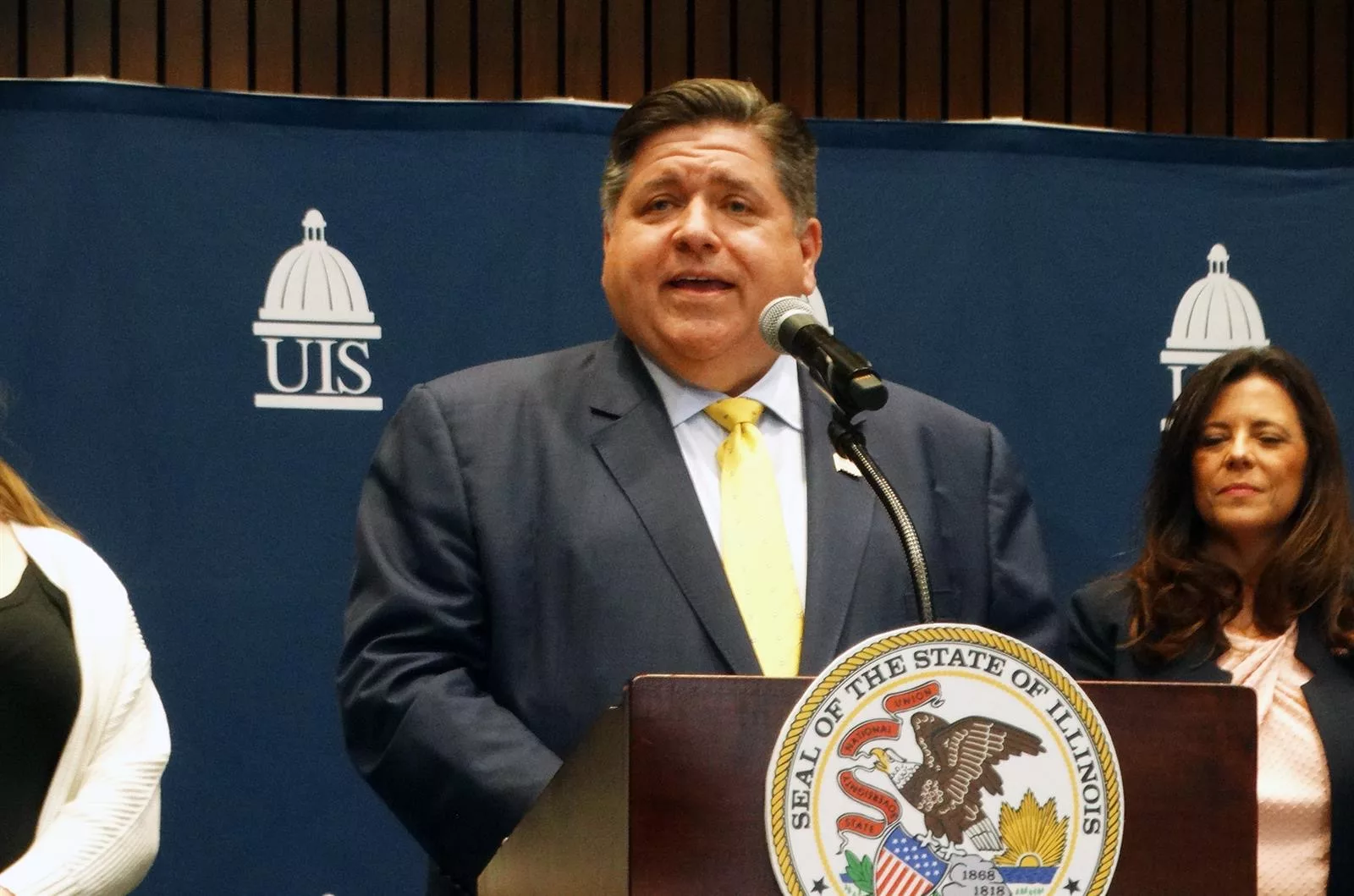
Gov. JB Pritzker is pictured at the University of Illinois Springfield Wednesday during a news conference called to tout the state budget’s higher education spending. (Capitol News Illinois photo by Peter Hancock)
MAP grant increase will make community college tuition-free for many
By PETER HANCOCK
Capitol News Illinois
phancock@capitolnewsillinois.com
SPRINGFIELD – Governor JB Pritzker began a tour of the state to tout the new state budget that lawmakers passed last week, stopping at two university campuses Wednesday to highlight the spending plan’s increased funding for higher education.
“With this new budget, we’re making it possible for nearly every student from a low-, moderate- or middle-income family to go to community college tuition free,” Pritzker said at the University of Illinois Springfield. “Getting a college or university degree shouldn’t strap you in debt for the rest of your life.”
The $50.6 billion budget, which has not yet arrived on Pritzker’s desk, includes a $100 million increase in funding for the state’s needs-based Monetary Award Program, or MAP grants, bringing the total level of funding for that program to $701 million – a 75 percent increase since 2019, when Pritzker first in office.
Pritzker noted that most undergraduate students at UIS start working on their degree at a two-year community college. He said the increase in MAP grant funding will mean that virtually all community college students from households at or below median income levels will have their tuition and fees fully covered between MAP and federal Pell grants.
The higher education budget also includes a $15 million increase in the state’s AIM HIGH merit-based scholarship program and an overall 7 percent increase in the base operating budgets of universities and community colleges.
Pritzker said the increase in base funding was especially important to help schools recruit and retain the best faculty and staff.
“Look what happened in other states, and what happened in Illinois during those bad years five, seven years ago,” he said, referring to the state’s budget impasse of 2015-2017. “Universities had to either lay off faculty or faculty saw how uncertain funding was and they left. … Now, because we’re funding universities properly, university professors, faculty, the people who work at universities have less to fear and more to be optimistic about it.”
In addition to increases in higher education funding, the budget also includes the statutorily required annual $350 million increase in the Evidence Based Funding formula for K-12 schools and $250 million to launch a four-year initiative called Smart Start Illinois that seeks to make early childhood day care and preschool available to every family in Illinois that wants it.
The budget passed through the General Assembly in the final days of their spring session with only Democratic support. Some Republicans, including House Minority Leader Tony McCombie, of Savanna, said they were concerned about whether all the new spending in the budget – including K-12 education and early childhood programs – would be sustainable in future years.
“There’s nothing worse than starting a new program and then having it not be sustainable,” she said during House floor debate early Saturday morning.
Pritzker, however, said his administration used conservative revenue estimates when building his budget proposal, and he said he was confident the new spending could be sustained.
“The baseline revenues of the state have risen,” he said. “There are a variety of reasons for that but one is the economy grew. The Illinois economy used to be $800 billion when I took office, it’s now above a $1 trillion. That gives you at least some idea of why our tax revenues are going up in the state of Illinois, because people are making more money, the economy is doing better.”
After speaking on the UIS campus, Pritzker traveled to the U of I’s Urbana-Champaign campus for a similar event.
Capitol News Illinois is a nonprofit, nonpartisan news service covering state government. It is distributed to hundreds of print and broadcast outlets statewide. It is funded primarily by the Illinois Press Foundation and the Robert R. McCormick Foundation, along with major contributions from the Illinois Broadcasters Foundation and Southern Illinois Editorial Association.


